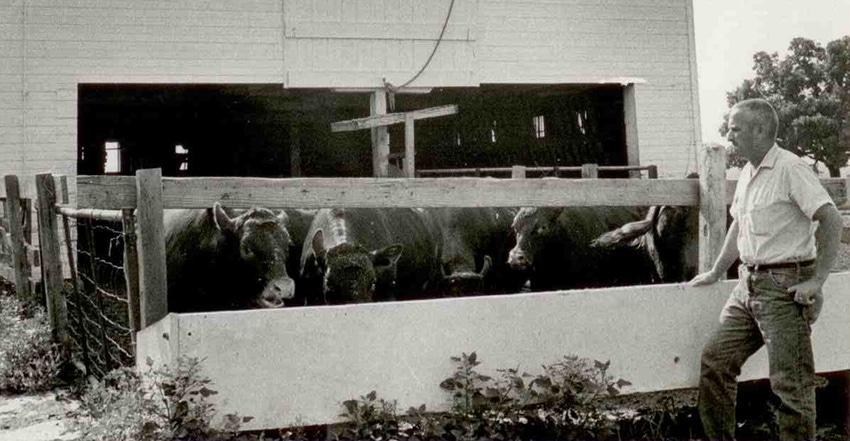July 15, 2019

By Stan Maddux
He could be viewed as the Babe Ruth of breeding red poll cattle. More than 30 years have passed since the late Marshall Mohler put the Pinney-Purdue research farm in Wanatah, Ind., on the map for his world-renowned work at raising a faster-growing, larger breed of red poll cattle.
His time as superintendent there from 1950 to 1987 is being celebrated during the centennial of Purdue University’s northwest Indiana agricultural research farm.
Mike Shuter, Frankton, Ind., remembers Mohler as knowing exactly what he wanted to accomplish with his cattle and how he was going to do it. He says Mohler was also very generous in sharing his knowledge on what to look for in a carcass and how to achieve the best results.
Shuter grew up showing cattle alongside Mohler’s children at such venues as the Indiana State Fair.
“Marshall was pretty serious,” Shuter recalls. “He was pretty much matter-of-fact ‘that’s the way we’re going to do it and the way we think it needs to be done.’”
Mohler died in 2010 at 87. According to his life story released by Purdue University, Mohler’s first interest in livestock came from showing pigs as a 4-H project.
Pinney-Purdue superintendent
When Mohler arrived at the Pinney-Purdue research farm, the slaughter weights of the 30 head of red poll cattle already there seldom exceeded 900 pounds. He set out to breed red poll cattle that consistently produced steers weighing 1,000 pounds one year after birth.
Mohler achieved the goal by importing calves mostly higher in quality than what existed at Pinney-Purdue from another Indiana farm. He then started breeding the five biggest bull calves with the five fastest-growing heifers. He discovered the fastest-growing calves produced the best carcasses. Mohler kept repeating the process, and five years later noticed a dramatic difference in the herd.
From 1960 to 1978, he added 100 pounds to weaning weights and took 100 days off slaughter age. Carcasses had 2 inches less fat and a half-inch more rib-eye.
Red poll fame
Many red poll cattle at Pinney-Purdue became national champions. Mohler’s growing reputation took him overseas to Australia and New Zealand as a judge and geneticist.
“Marshall was really pretty good at evaluating a live animal and being able to tell you what that animal was going to look like when it was hanging,” Shuter says.
Red poll cattle were popular, especially on smaller farms, because of their ability to produce quality beef and enough milk to make a profit. Stephen Hawkins, director of Purdue Agricultural Centers, says a single breed able to do both eliminates the more difficult task of keeping two breeds for meat and dairy.
“It was just easier for the farmer to manage it,” he says.
The red poll breed began declining in popularity when commercial beef producers turned more toward single-purpose breeds. By 1986, the famed Pinney-Purdue herd was gone because economics had changed. Mohler retired the following year.
Red polls are still among the 90 or so beef cattle at the Shuter farm. Shuter says red polls have had a presence there since 1941. “We just kind of said we’re going to keep some of them around,” he says.
Maddux writes from South Bend, Ind. This is another article dedicated to celebrating 100 years of the Pinney-Purdue Ag Center at Wanatah.
You May Also Like




